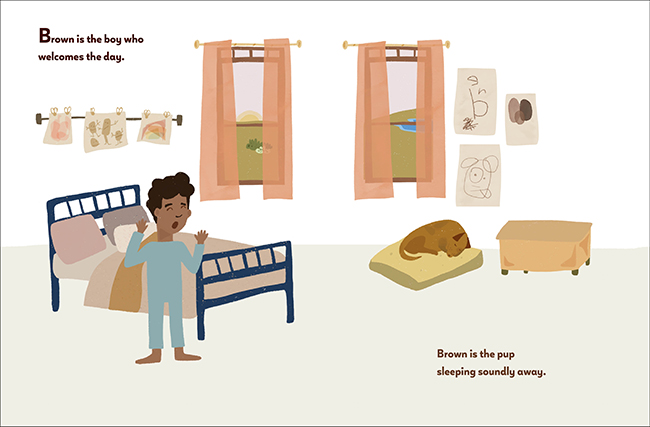How to Talk to Young Children About Skin Color
by Ron Grady
From his studies in psychology and child development, Ron Grady knows how implicit ideas and associations influence children’s thoughts about the world and themselves. He created What Does Brown Mean to You? as a way to encourage children of color to see the beauty of their skin in their families, community, and the world around them.
The main character, Benny, is a self-confident, lively, and joyous young boy. Throughout the story, he notices the beautiful brown things around him, from coffee and fuzzy blankets to his dog and his family’s skin color.
Here, Grady shares some tips on engaging young children to see, notice, and talk about our differences in a way that embraces that diversity and bonds us as a community.
Engaging children in serious conversations is something grown-ups often find puzzling. Very often, especially with the things that bring us pause or the issues we know are fraught with tension, grown-ups can spend serious amounts of time wondering about the best, ideal, or right ways to talk to children about them. How will children respond? How will we field their questions? How do we protect them or shield them from painful, complex realities? How do we help them navigate things we aren’t sure of ourselves?
While there is no precise answer to any of these, a heartening reality is that these conversations don’t have to be serious, intense, groundbreaking, or fraught with tension. Children are already noticing, wondering about, and thinking about the things that we adults think are serious. This is no different with skin color and racial identity — or our attitudes about them.

Imagine the way a child looks at the world. With eyes wide with wonder, a mind open to new ideas, and a heart that sees the best intentions in others. Children’s wide eyes, open minds, and loving hearts are also savvy — a critical part of children’s lives involves navigating and figuring out a complex world.
So, given this knowledge, how can we create positive, sensitive, and meaningful conversations with our little ones about race, skin color, and what it all means?
1. Move past our own discomfort.
While it’s true that children notice things and pick up on many of the messages we send, we can take heart in two things:
- First, children’s ideas are malleable. They are learning and can re-learn, re-frame, and revise their understanding of any negative messages they may have received in the same way we can
- Second, it’s helpful to remember that while children notice things, they don’t always do so with the same set of lenses that adults do. Children do not always bring the feelings of negativity, discomfort, and tension to a subject that adults do. (Think about if you’ve ever heard a child use a word in mixed company that left you feeling a little embarrassed). This means that we can often venture into this territory without fear.
2. Speak affirmingly and positively.
Build up children — and yourself! When we speak positively about ourselves, our experiences, how we look, how we feel, and how we move through the world, we model for children what it means to look at ourselves and be proud!
3. Bring in narratives that center our experiences in the rich diversity in which they occur.
This one is key! Bringing in experiences that showcase the broad diversity of individuals with brown and black skin is so important. Presenting Benny’s day as slice-of-life adventures was a conscious decision to celebrate the expansiveness of Black and brown childhoods. I wanted to show Benny doing the things that children of all colors love.

4. Explore ideas through multiple mediums.
Conversations don’t always happen with words, teaching isn’t always unidirectional, and complex concepts don’t have to be — and can’t be — figured out in a single setting. Some ways you might invite children to think about skin tone and race in an emergent way are:
- Invite children to create portraits of themselves and those they love.
- Discuss ways to create hair texture using crayons or colored pencils.
- Mix paints to approximate skin color.
- Make models of meaningful individuals, etc.
If there are any parting words I can leave you with, I’d love for you to remember that you can do this—you can do this! You don’t have to be perfect; You don’t have to have all the answers, and you don’t have to do it right the first time — teach your children to love themselves, love others, and love the skin they’re in!
-
Buy the Book:

